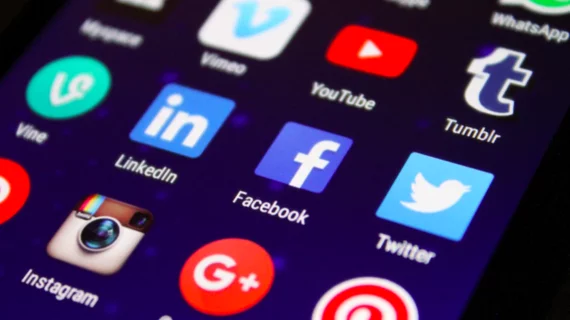Neuroradiology training programs are not embracing social media
Most neuroradiology training programs are failing to use social media and missing an opportunity to engage with the public, according to new research published by the American Journal of Roentgenology.
“Academic neuroradiology in the United States has used its main society, the American Society of Neuroradiology, and its annual meetings, website, and journals in neuroradiology to promulgate its message of innovative research in the fields of brain, spine, head and neck, pediatric, and interventional neuroradiology,” wrote Paniz Charkhchi, MD, department of radiology at the University of Michigan in Ann Arbor, and colleagues. “However, these traditional means of messaging may not have the same allure or impact as the social media used by Millennials who may currently be entering or training in their medical careers.”
The researchers focused on the four most popular social media platforms: Facebook, Twitter, LinkedIn and Instagram. Overall, just eight of the 75 National Resident Matching Program-registered U.S. neuroradiology fellowship programs ran at least one social media account. Four programs had a Facebook account, and four had a Twitter account.
While neurosurgery and neurology programs had a “significantly greater social media presence” than those in neuroradiology, the team did find that larger neuroradiology programs were much more likely to have their own social media accounts. And few neuroradiology division chiefs appeared “actively engaged” on Facebook and Twitter.
Studying the social media accounts operated by these neuroradiology programs, Charkhchi and colleagues observed that 51 percent of posts were related to news and publications. Networking made up 14 percent of posts, department news made up 12 percent, educational posts made up 6 percent and “other” made up 17 percent.
“If more of the followers of these accounts are in the training phase (i.e., medical students, residents and fellows), more attention should be paid to providing educational content in the posts,” the authors wrote.
Overall, the authors noted that social media platforms are a staple of how young people experience the world around them. These platforms offer neuroradiology programs potential value if the specialty will embrace them.
“Encouraging neuroradiology training programs to be more involved in social media can help to recruit more medical students and residents to the field,” the authors wrote. “It also helps fellows and practicing neuroradiologists to extend their professional networks in addition to keeping them up to date about neuroradiology news, publications, and opportunities at different institutions.”

